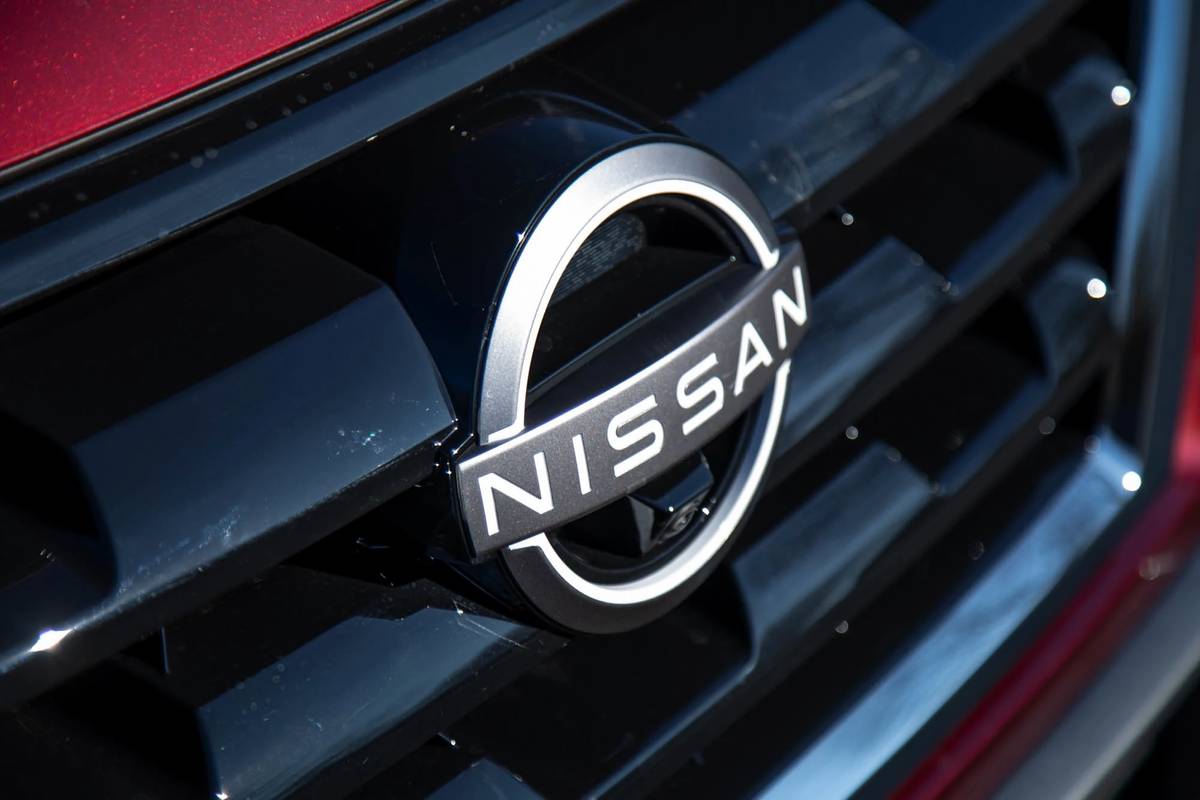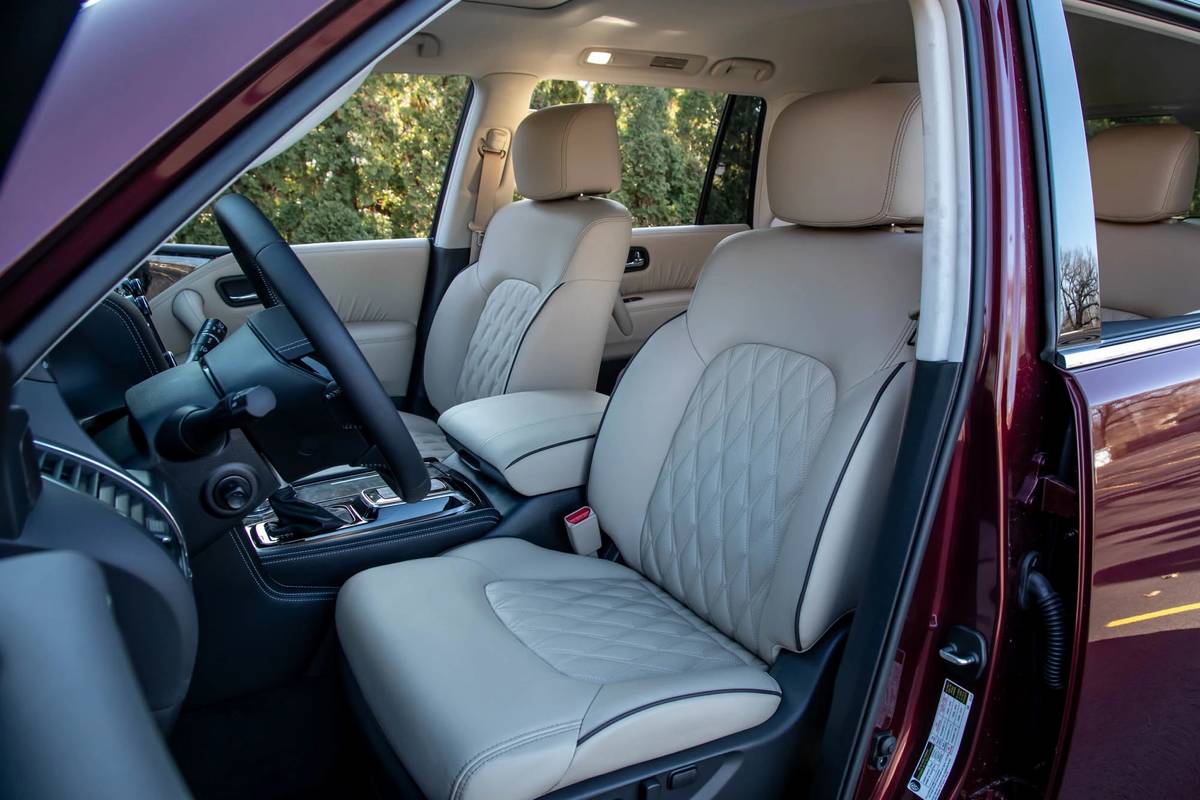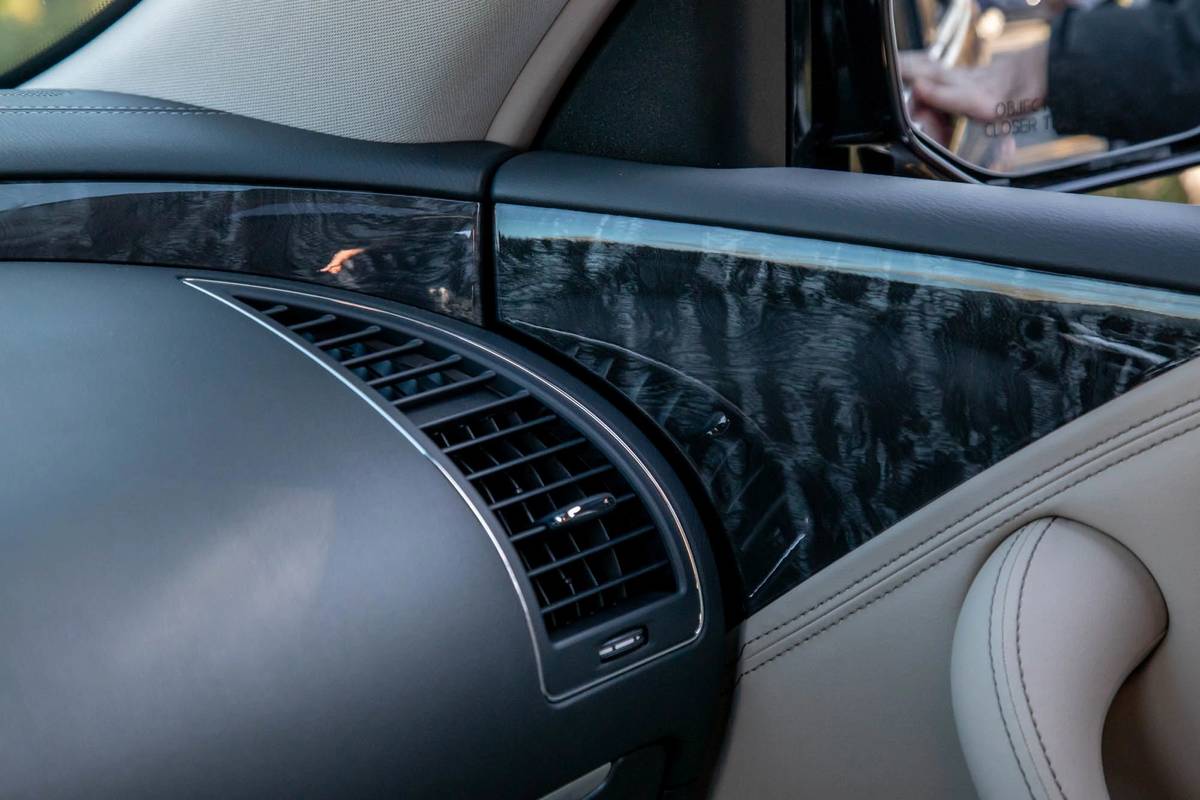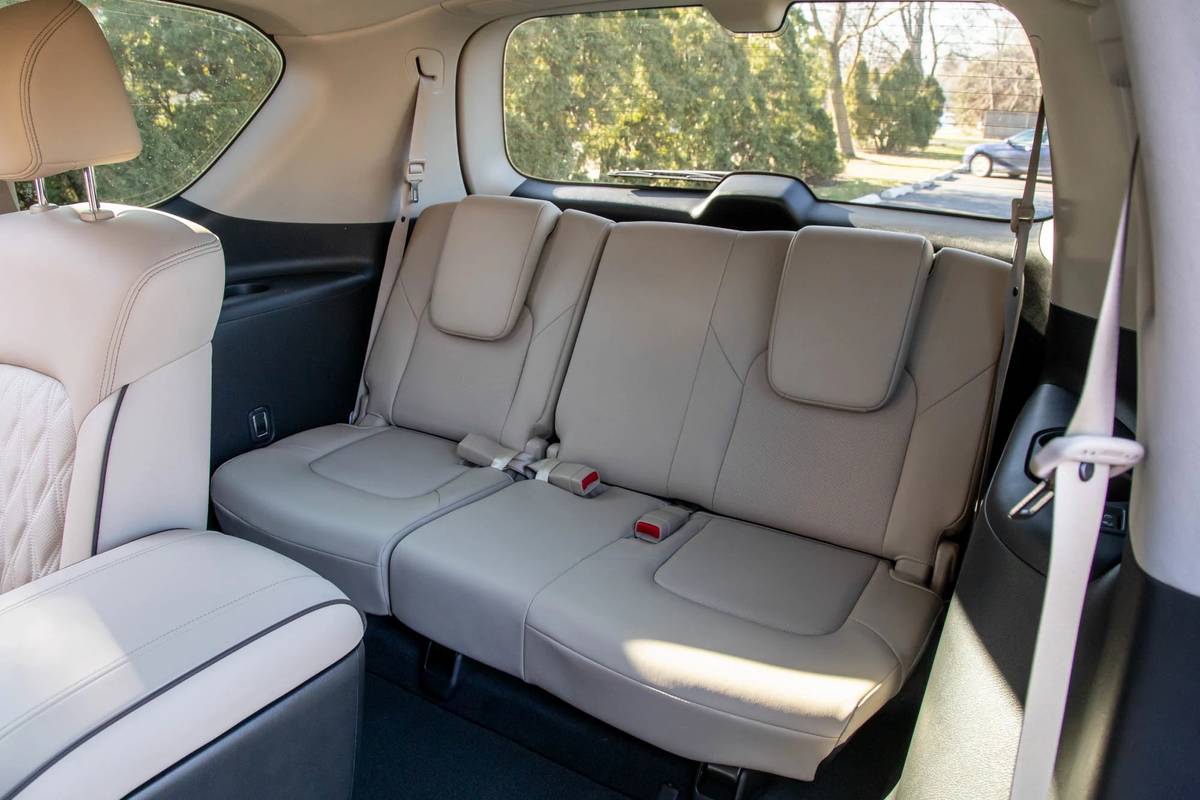
The verdict: The refreshed 2021 Armada gains some much-needed improvements to make it a more well-rounded SUV, but Nissan went small while competitors took big leaps.
Versus the competition: While the Armada may have less interior space versus its competition, it still offers a strong value proposition and impressive towing capacity — a capacity it’s now better equipped to handle.
The second generation of Nissan’s Armada full-size SUV debuted as a 2017 model. For 2021, it gets a slight refresh that updates its appearance, front and rear, while adding sleeker dashboard controls and a larger touchscreen. In ascending order, trim levels available at launch are the SV, SL and Platinum (a budget S trim is coming later), with rear- or four-wheel drive available.
While the Chevrolet Tahoe and related GMC Yukon went with comprehensive redesigns for 2021, Nissan chose to make small but meaningful improvements to its largest SUV. After finishing second in our last comparison of full-size SUVs on the strength of its value and safety features, are these updates enough to put the Armada over the top, or is Nissan falling behind its competitors? (Compare it here with the Chevrolet Tahoe, Ford Expedition and Toyota Sequoia.)
Related: 2021 Nissan Armada Refresh: More Plush, More Punch
New, More Rugged Looks
One of the Armada’s key changes for 2021 is a new look, front and rear. To my eyes, the more squared-off face and hood create a rugged appearance that doesn’t have as much of the faux premium look of the 2017-20 design. It reminds me a bit of older generations of the Nissan Patrol, Nissan’s global full-size SUV, with which the Armada has shared a platform since the 2017 model year.
An aesthetic highlight is the updated Nissan badging in the signature V-Motion grille. The automaker first revealed the new badge on the Ariya all-electric SUV, but the Armada is the next production vehicle available with the new badge. I like it even though it’s a small change — something of a running theme with the Armada.
More Modern Interior
Nissan has redone the Armada’s center controls, with a much cleaner look that replaces the jumble of buttons on the 2017-20 Armada. The buttons in their place have a faux touchscreen appearance thanks to the piano-black finish and almost seamless appearance. It looks good, though I think the redesigned Rogue SUV does it even better.
The centerpiece of the new interior is the 12.3-inch touchscreen. It works well, with intuitive controls and crisp graphics, even if it just appears to be a modern-looking version of Nissan’s older touchscreen. Unfortunately, most functions are relegated to a two-thirds portion of the screen, which I found frustrating. Native navigation gets the entire screen, but if you use Apple CarPlay or Android Auto (wireless CarPlay is now standard; Android Auto is still wired), you only get the two-thirds portion.
More confusingly, the smaller one-third side of the screen has functions that seem redundant or extraneous. In the Armada Platinum I drove, among the 10 choices of what to display in that section are analog or digital clock displays, turn-by-turn directions, the currently playing audio (even if it’s in the larger part of the screen) or six different weather forecasts. I’d rather have an undivided screen.
A couple of other, minor quibbles: The tuning knob at the lower right of the display was a bit of a stretch for me to reach, and the driveline selector for four-wheel drive is up and to the right of the gear selector, which makes it difficult to see all of the choices from a normal driving position.
Front-seat comfort and visibility are still strong suits, but the second-row captain’s chairs in the Platinum grade I tested are the best seats in the house. There you get access not only to the Platinum’s standard rear entertainment system but a center console with storage, cupholders and a comfortable armrest. Legroom and headroom in the second row are also exemplary.
Not so much in the third row, however, at least not for adults. The second-row console compounds legroom further, but unlike in past generations, this console is at least removable, which also improves third-row access. If you want to keep the console in place, the second-row captain’s chairs also tumble and fold to allow passengers to clamber into the back, though it’s not as easy as it could be. The lack of space in the third row is a problem when most competitors — including the Tahoe and especially the Expedition — offer adult-sized, if not adult-friendly, third-row seating.
The second- and third-row seats can also be power-folded from the cargo area for increased cargo space. According to Nissan’s measurements, space behind the third row measures 16.5 cubic feet. Fold down the third row and that increases to 49.9; fold the second row down along with it and Nissan says you have 95.4 cubic feet.
Slightly More Power, Same Driving Experience and MPG
Also updated for 2021 is Nissan’s tried-and-true 5.6-liter Endurance V-8, the Armada’s only available engine. It boasts increased horsepower and torque ratings of 400 and 413 pounds-feet, respectively, up from 390 hp and 394 pounds-feet in the 2017-20 Armada — up, that is, if you fill the Armada’s tank with premium gas. Use 87-octane regular and horsepower dips to 390. Our test vehicle was filled with premium and … we didn’t really observe a noticeable difference. Owners might be wise to save a few bucks at the pump and stick to regular gas.
Paired with a seven-speed automatic transmission, the big V-8 still provides plenty of power for city and highway driving, though the transmission seems reluctant to downshift when you need more power while already in motion, and passing maneuvers can involve a brief but noticeable delay as it begrudgingly complies.
Ride and handling are very trucklike, which is to be expected for a big body-on-frame SUV. I like the feeling, but competitors offer more composure and sharper handling. Steering, meanwhile, requires relatively light effort, but it’s not too vague. The Armada doesn’t really feel nimble, but (despite the name) it doesn’t feel like steering a boat.
Another key change is the addition of an integrated trailer brake controller. Previously, the Armada was only prewired for one, and in our last full-size SUV comparison, we had to purchase an aftermarket controller to safely tow our test trailer; it ended up awkwardly installed by the driver’s left knee. The integrated controller is a small but welcome addition. Maximum towing capacity remains 8,500 pounds, which should be more than enough for weekend toys or a family vacation trailer.
Even with an economically minded transmission, fuel economy was never a strong suit for the Armada, and Nissan estimates that the 2021’s ratings won’t change from previous generations, meaning rear-wheel-drive models are rated at 14/19/16 mpg city/highway/combined and 13/18/15 mpg for 4WD — combined figures that trail similarly equipped rivals by a significant 2 to 4 mpg.
Safety
As a new vehicle, the 2021 Armada has not yet undergone any crash tests, and we also have yet to test its fitment of child-safety seats as part of one of Cars.com’s Car Seat Checks.
The Armada does come with a bevy of standard advanced safety features, however, as part of Nissan’s Safety Shield 360 suite. That includes forward collision warning with automatic emergency braking, blind spot warning with collision avoidance and rear cross-traffic alert, rear automatic emergency braking, and lane departure warning with braking intervention. The Platinum I drove adds standard Intelligent Backup Intervention to mitigate collisions while reversing.
A camera-based rearview mirror and 360-degree camera system are also standard on the Platinum.
Value Choice
While we don’t yet have pricing for the 2021 Armada, one of its historic strengths has been a relatively lower price compared to most competitors. Previously, a fully loaded Armada was unlikely to cost much more than $65,000, and even if these updates push that envelope north of $70,000, most competitors can easily cross the $80,000 mark without blinking an eye.
With that in mind, the Armada remains a solid choice for those seeking a three-row SUV for casual towing or carrying around a large family, even as the Tahoe and Expedition present more well-rounded options. Even if the Tahoe’s redesign overshadows the Armada’s improvements, Nissan’s updates for 2021 certainly make the SUV better, and the potential for value ensures a good choice for some.
We cannot generate a video preview.
Cars.com’s Editorial department is your source for automotive news and reviews. In line with Cars.com’s long-standing ethics policy, editors and reviewers don’t accept gifts or free trips from automakers. The Editorial department is independent of Cars.com’s advertising, sales and sponsored content departments.











































































































